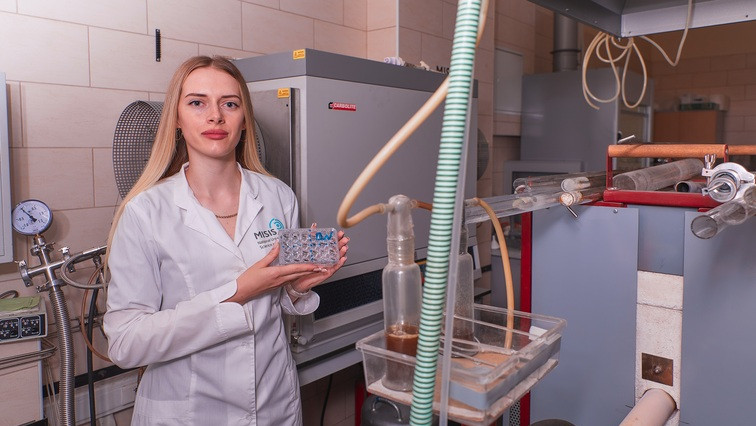The history of mankind is linked to the fight against infections, and the problem is still acute. Due to a significant increase in the number of surgical interventions and the emergence of bacteria resistant to antibiotics, the problem of suppressing infection in the early stages has become especially relevant. For example, according to the scientific journal Lancet, about five million people died from various infections in 2019. According to the same publication, mortality from bacterial resistance to antibiotics is now second only to stroke and coronary heart disease.
In addition, scientists all over the world are trying to solve the problem of microbial infections caused by the installation of implants during surgery. Orthopaedic and dental surgery is a particularly serious problem. It is no secret that concomitant drug therapy for inflammation around implants often leads to side effects due to the antibiotics’ properties and high doses.
A group of scientists from NUST MISIS in cooperation with colleagues from the State Research Center for Applied Microbiology and Biotechnology offered a non-standard solution to the problem — a complex triple effect on an infectious pathogen: physical damage to the bacterial membrane, a bactericidal effect due to the release of metal ions and the synthesis of reactive oxygen species that destroy pathogens.
“To solve the problem, we have synthesized coatings consisting of boron nitride nanoparticles, modified with ultrafine metallic silver or iron oxide nanoparticles. Boron nitride carriers have a unique spherical shape with a surface covered with needles. Adhering bacteria die due to the physical destruction of their cell membrane upon direct contact with the surface. The coatings themselves emit metal ions depending on concentration. Our studies have shown that at a minimal inhibitory concentration, iron oxide nanoparticles (74 μg/cm2) effectively suppress the growth of gram-negative E. coli bacteria, as well as staphylococcus aureus and streptococcus pneumoniae bacterial strains during the first three hours. Coatings with silver at a minimum concentration equal to 12 μg/cm completely inactivate bacteria”, — said Christina Gudz, one of the authors of the study, a researcher at the NUST MISIS Inorganic Nanomaterials Laboratory.
It turned out that this coating destroys 100% of the studied microorganisms: bacterial strains and Candida parapsilosis fungus die within 24 hours of exposure. According to the researchers, the spherical and needle-shaped (“shaggy”) nanoparticles can only be formed from boron nitride. Its uniqueness is registered in the form of Russian know-how on “The method of obtaining hexagonal boron nitride nanostructured coatings with an antibacterial effect”.
Enhanced bactericidal and fungicidal activity of the obtained samples is associated with the formation of a large number of reactive oxygen species: free radicals damage the membranes of microorganisms, which leads to their death.
The developers emphasize that the tests have proven the absence of cytotoxicity of the coating, which means that it is safe for the patient, while its active substance is effective against pathogens. The predominant difference of the coating compared to the analogues is the minimal doses of bactericidal components and the complete absence of an antibiotic filler, which eliminates resistance.
The team tests the obtained samples as coatings for implants. The next step will be to use the development as the dressing material in traumatology and surgery. It is also planned to conduct in-vitro studies in the future, but now the priority is to conduct studies on dangerous strains of bacteria and viruses (Vibrio cholerae, Covid-19, etc.).
The results of the work have been published in the Applied Surface Science journal.
Read the original article on National University of Science and Technology MISIS.







